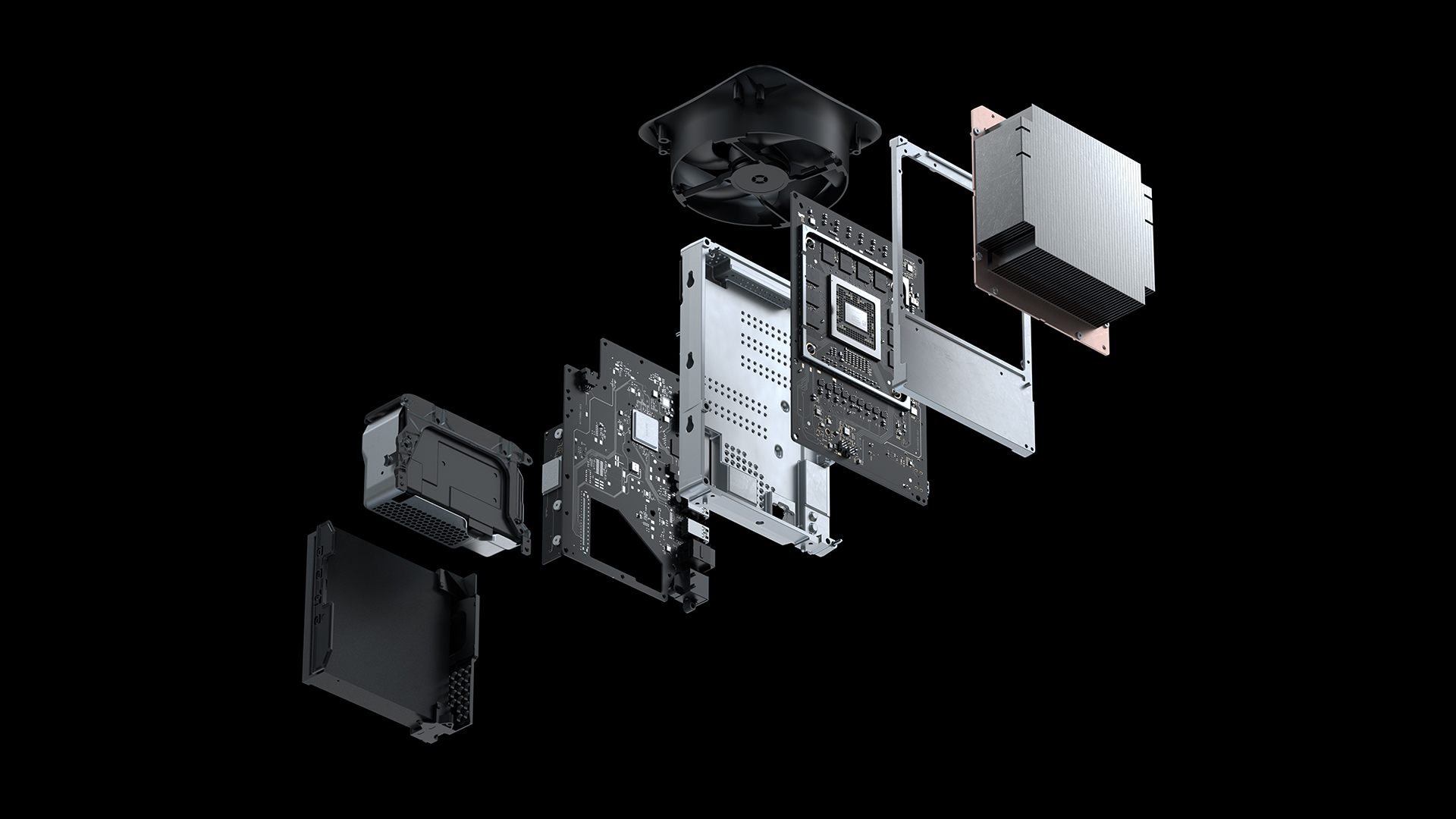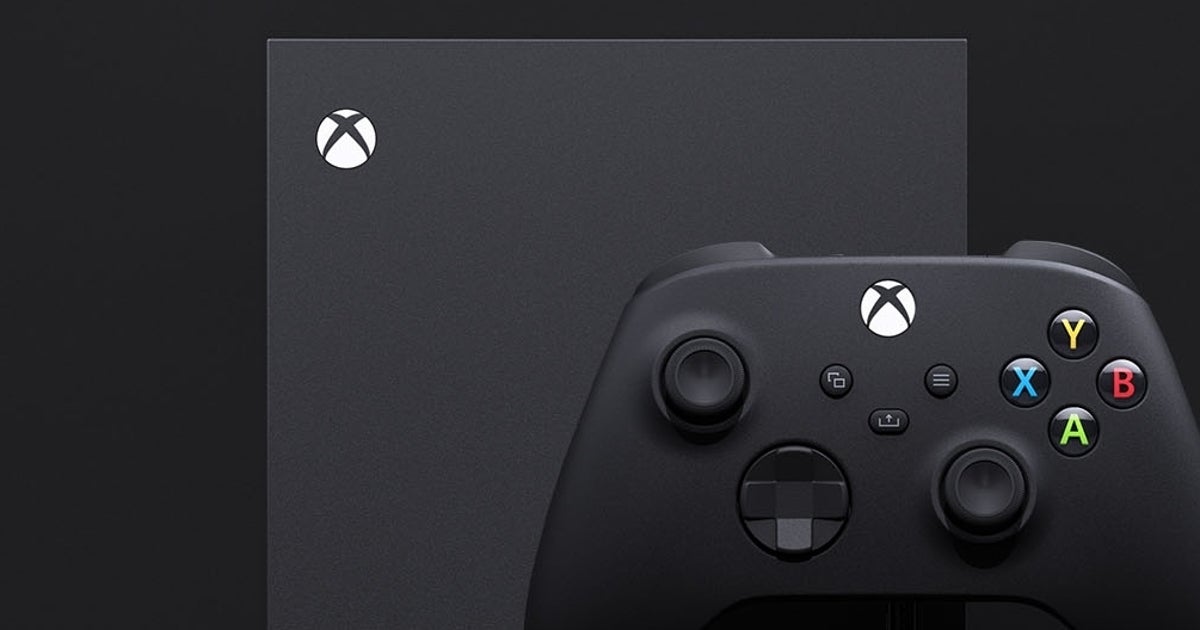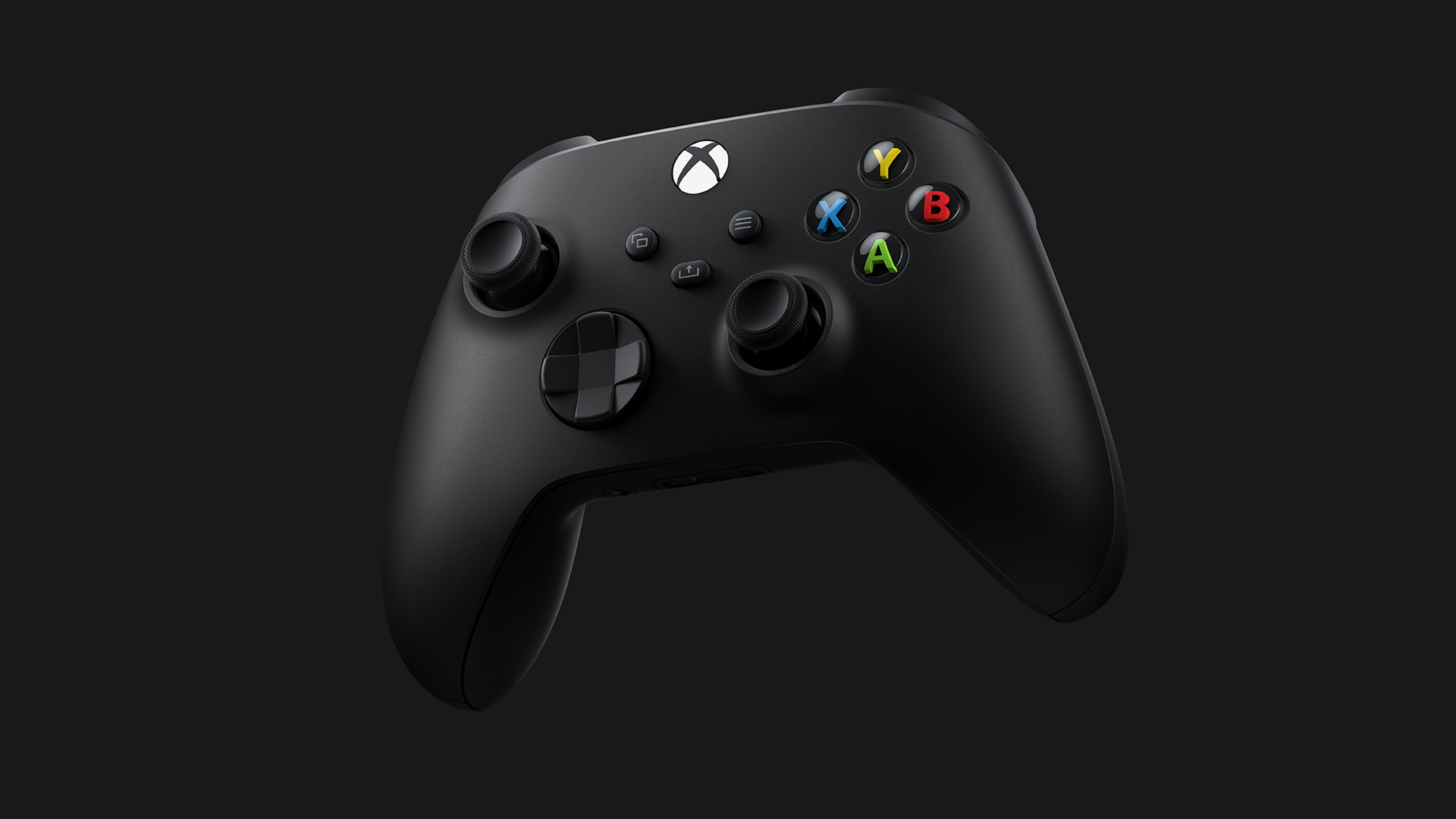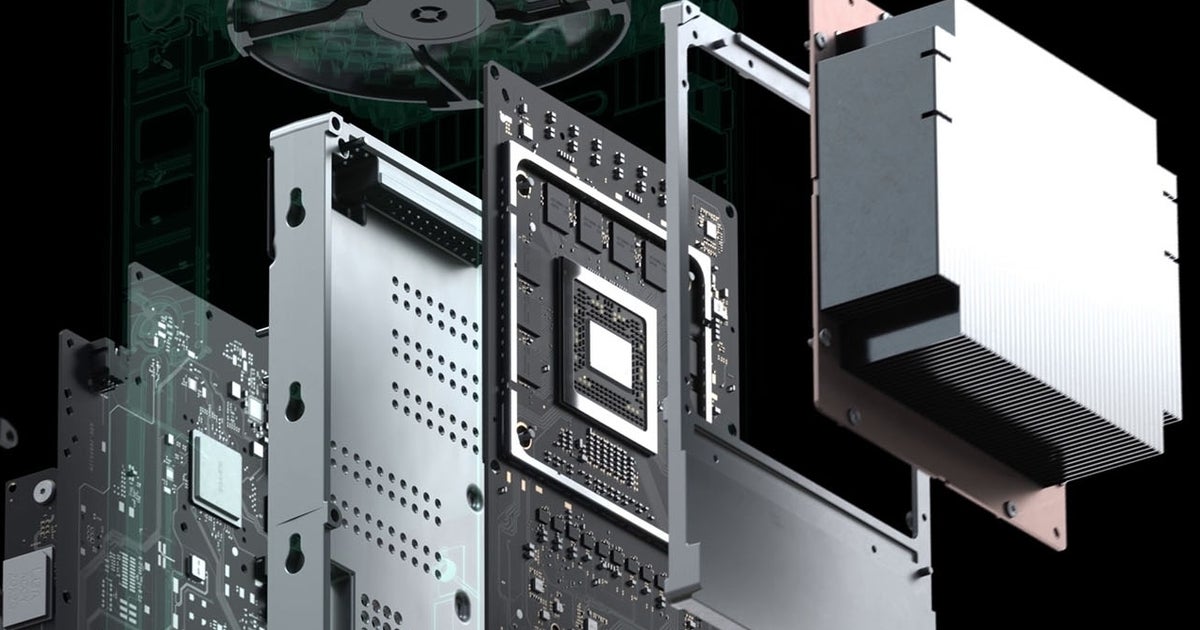-
Hey, guest user. Hope you're enjoying NeoGAF! Have you considered registering for an account? Come join us and add your take to the daily discourse.
You are using an out of date browser. It may not display this or other websites correctly.
You should upgrade or use an alternative browser.
You should upgrade or use an alternative browser.
[Digital Foundry] Xbox Series X Complete Specs + Ray Tracing/Gears 5/Back-Compat/Quick Resume Demo Showcase!
- Thread starter Mista
- Start date
CyberPanda
Banned

Xbox Series X: A Closer Look at the Technology Powering the Next Generation - Xbox Wire
A few months ago, we revealed Xbox Series X, our fastest, most powerful console ever, designed for a console generation that has you, the player, at its center. When it is released this holiday season, Xbox Series X will set a new bar for performance, speed and compatibility, all while allowing...
 news.xbox.com
news.xbox.com
Another article here.
nikolino840
Member
Wowow wait a minute..lots of info now XD
CyberPanda
Banned
Gavin Stevens
Formerly 'o'dium'

Last edited:
CyberPanda
Banned

Xbox Series X: just how big is it - and how does it compare to Xbox One X?
It's not a PC-style mini-tower - really, it isn't. We've spent some time with Xbox Series X at Microsoft's Redmond camp…
It's not a PC-style mini-tower - really, it isn't. We've spent some time with Xbox Series X at Microsoft's Redmond campus and even put the actual system side-by-side with an Xbox One X - and while it's clear that Microsoft has radically revamped the console form factor, it is still a living room friendly design. It's just somewhat different and definitely somewhat portlier than the kind of gaming box you may be used to. Crucially, it's still very much a console.
The design of the Series X is essentially a factor of the performance target, a machine designed to operate at fixed clocks at what are - for a home console at least - unprecedented frequencies. A console has never run its CPU component at 3.8GHz before. We've never seen a fixed design games machine run its GPU at clock speeds that match the kind of frequencies we've seen in a discrete PC graphics card. On top of that is another key design goal - to back away from fluctuating 'boost clocks' seen in PC parts and mobile devices and instead deliver high-end performance with rock solid consistency.
So, to kick off with, here's a new Digital Foundry Direct episode recently shot in the US, where myself and colleague John Linneman discuss our impressions of the Series X hardware itself, roll out all of the Xbox One X form-factor comparisons you need and come to the startling conclusion that Series X is indeed rather similar to two GameCubes stuck together. OK, so we had to strap on a couple of GBA Players to get broadly equivalent height, but you get the idea.
The video also has some footage of my attempts to construct an Xbox Series X from its component parts - and I think you'll find it enlightening. Pushing this much power through the system and ensuring adequate cooling brings out a surprisingly tight, super-compact design that has some echoes of how the bin-shaped Mac Pro is put together. Cooling air is pulled in from the bottom of the unit, pushed through the internals and vents from the top, dissipated by a 130mm fan.
But it's the nature of the internals that fascinates me most. Series X actually has two mainboards, one for the main processor, its 320-bit memory interface and 10 modules of GDDR6 memory. These are mounted either side of a solid piece of aluminium. A weighty heatsink comprised of a copper vapour chamber and aluminium heat sink then strap onto the SoC. Other major components such as the power supply and 4K UHD Blu-ray fit into place before the axial fan (complete with its Master Chief Easter Egg on the side) sits on top. The whole arrangement then slides into the case and the rear panel is attached.
Right now, we don't have any idea of how much power Series X consumes while gaming - and while the processor uses a much more efficient, enhanced version of the TSMC 7nm node, the clocks and the sheer size of the logic here - not to mention the form factor and design needed to dissipate the heat - mean that this will be a more power hungry box. The only indication we have of the possible increase in consumption (and to be clear, it is only an implication) are the specs of the integrated power supply.
Just like Xbox One X, the PSU module we saw for the Series X (which - we stress - may not be final) supports multi-voltage and for 50Hz electrical supplies, the spec is 200-220v at 2.2A up against 200-220v at 1.3A for Xbox One X. That's a ballpark 70 per cent increase in power delivery. It's far from a conclusive comparison, but it gives some perspective on the demands placed on the design team and why a new form-factor was required.
A couple of final observations: you may have got the impression from the CG teaser from The Game Awards that the top of Series X ships with some kind of green LED lighting, but rest assured, that's not the case - it's a simple green plastic insert that sits between the fan and the internals. Secondly, the rear of the final unit is pretty much the same as the prototype design that was leaked a while back, with one exception: digital audio output via Toslink has gone. That's a bit of a shame from our perspective as it locks out any form surround from legacy audio hardware - it's HDMI-only now.
Xbox Series X Xbox One X Xbox One S Dimensions 15.1cm x 15.1cm x 30.1cm 30cm x 24cm x 6cm 29.5cm x 23cm x 6.5cm Total Volume 6.86 litres 4.32 litres 4.41 litres Weight 4.45kg/9.8lbs 3.69kg/8.14kg 2.90kg/6.4lbs Ports: HDMI 2.1 output, 3x USB 3.2, networking port, expanded storage slot, power input HDMI 2.0b output, HDMI 1.4 input, 3x USB 3.2, Toslink audio, IR output, Gigabit Ethernet, power input. HDMI 2.0a output, HDMI 1.4 input, 3x USB 3.2, Toslink audio, IR output, Gigabit Ethernet, power input. Optical Drive: 4K UHD Blu-ray 4K UHD Blu-ray 4K UHD Blu-ray
And there's something else from our visit to Microsoft that we'd like to share - the nature of the development kit. There've been a few leaks of the PlayStation 5 dev kit, but nothing at all on its Series X counterpart. A later general roll-out of development hardware may partly explain this, but there's also the fact that the Series X kit looks uncannily similar to the Xbox One X equivalent - so prospective leakers may not have been aware that they were looking at different kit. A side-by-side inspection reveals that beyond the dark grey colours scheme, the Series X kit is a touch taller and has a tweaked array of ports, but regardless - making your new dev kit look much like the old one is one way to help anonymise your new hardware.
Getting to see the new console running at the Microsoft mothership with a range of tech demos was a fascinating experience but equally as insightful were the presentations on the industrial design of the Xbox Series X. You'll get some initial reactions to the presentation in today's DF Direct, but we'll back soon with a more detailed breakdown of the construction of the new machine.
Digital Foundry was invited to Microsoft in Redmond WA during early March to cover the Xbox Series X specs reveal. Microsoft paid for travel and accommodation.









CyberPanda
Banned
/cdn.vox-cdn.com/uploads/chorus_asset/file/19526235/xboxseriesx.jpg)
Microsoft unveils full Xbox Series X specs with 1TB expansion cards
The software giant also demonstrates load times.
Microsoft is revealing the full specs for its Xbox Series X console today. The software giant will be using a custom AMD Zen 2 CPU with eight cores clocked at 3.8GHz each, a custom AMD RNDA 2 GPU with 12 teraflops and 52 compute units clocked at 1.825GHz each. This is all based on a 7nm process and includes 16GB of GDDR6 RAM with a 1TB custom NVME SSD storage drive.
All of this power will include the ability to expand storage through 1TB expansion cards at the rear of the console, with USB 3.2 external HDD support and a 4K Blu-ray drive. Microsoft is targeting overall performance at 4K 60fps, up to 120fps.
The next-gen Xbox will also support 8K gaming and frame rates of up to 120fps in games. Microsoft has partnered with the HDMI forum and TV manufacturers to enable Auto Low Latency Mode (ALLM) and Variable Refresh Rate (VRR) on the Series X as part of its HDMI 2.1 support.
Microsoft is still in the process of teasing the power and hardware support of the Xbox Series X, but the company has also revealed some aspects of the software side. Specifically, the console will be able to resume multiple games instantly and even resume titles after the Series X is rebooted for a system update.
Shin
Banned
I couldn't read the rest of the sheet.
- Dimensions 15.1cm x 15.1cm x 30.1cm
- Weight 9.8lbs / 4.44 Kg
- 12 Teraflops, 52 CUs @ 1.825 GHz
- Custom RDNA 2 GPU
- SoC Die Size 360.45 mm2
- 16GB GDDR6
- 10GB @ 560 GB/s, 6GB @ 336 GB/s
- 1TB Custom NVMe SSD
- 2.4 GB/s (raw), 4.8 GB/s (compressed)
- 1TB Expansion Card
- USB 3.2 External HDD
- 4K UHD Blu-ray
- 2160p (4K) @ 120Hz,
- 4320p (8K) @ 60Hz
- HDMI VRR & AMD Freesync
- HDR10
- Dolby Vision Low Latency
- Auto Low Latency Mode
- Variable Refresh Rate
- Fixed Rate Link
- HDCP 2.2
- VP9, H.265, HEVC/MSP
- H.264 AVC/MVC/SVC
- MPEG-2, MPEG-4 Part 2, VC1, WMV9
- Dolby Digital 5.1, DTS 5.1
- PCM 2.0, 5.1 & 7.1, Dolby TrueHD w/ Atmos (from games)
- Dolby TrueHD (opt. Atmos), DD+ (opt. Atmos), DTS-HR/MA (opt. DTS-X)
- AAC, MP3, MPEG1, WMV
- IEEE 802.11ac dual band
- 5GHz & 2.4GHz 2x2
Last edited:
CyberPanda
Banned
Gavin Stevens
Formerly 'o'dium'
Where have I seen that 12.1(55)tf number before...?
I have to say, I'm a bit surprised at the split memory bandwidth 10GB @ 560 GB/s, 6GB @ 336 GB/s seems an odd strat to take.
I have to say, I'm a bit surprised at the split memory bandwidth 10GB @ 560 GB/s, 6GB @ 336 GB/s seems an odd strat to take.
Coulomb_Barrier
Member
Design looks a bit cheap and plasticky. We should expect more from a $450+ console.
Last edited:
Design looks a bit cheap and plasticky.
nah, its way better than glossy crap
Mista
Banned
CyberPanda
Banned
I know that, but I'm just posting all the info in here because it might as well be the reveal of the console itself. That way we won't need multiple threads.
Mista
Banned
I'll ask the mods to merge them thenI know that, but I'm just posting all the info in here because it might as well be the reveal of the console itself. That way we won't need multiple threads.
CyberPanda
Banned
GaviotaGrande
Banned
Proprietary external storage 
Smaller than Atom
Member
I think it looks amazing. Looks beefy and powerful to me.Design looks a bit cheap and plasticky. We should expect more from a $450+ console.
Gavin Stevens
Formerly 'o'dium'
Proprietary external storage
For now, yes. Later on more will be licenced, and sizes will increase, but for now you need to make sure the performance targets are hit. You can't just stick any old drive in these machines.
What were you expecting on Sonys machine, exactly? Both will go this route, its the only way.
Mista
Banned

Xbox Series X: Making Gaming’s Best Controller Even Better - Xbox Wire
With each generation of controllers, from Xbox to Xbox 360 to Xbox One to Xbox One S, the Xbox hardware team has led and innovated input for gaming. They’ve set new bars with Elite and Adaptive Controllers in performance, features, quality, and accessibility. When considering the next generation...
 news.xbox.com
news.xbox.com
Birdo
Banned
Proprietary external storage
Yeah, that sucks. But we all saw it coming, due to the nature of the new tech.
The big question is the price of them.......... (Please no Vita style prices).
Last edited:
CyberPanda
Banned
LMAO
Proprietary external storage
"All of this power will include the ability to expand storage through 1TB expansion cards at the rear of the console, with USB 3.2 external HDD support."
what is the external hdd support for then?
Smaller than Atom
Member
Is that really happening? That's terrible.Proprietary external storage
CyberPanda
Banned

Inside Xbox Series X: the full specs
This is it. After months of teaser trailers, blog posts and even the occasional leak, we can finally reveal firm, hard …
FranXico
Member
Proprietary expansion cards (to act as fast internal storage). External HDDs will still be compatible.Proprietary external storage
CyberPanda
Banned
The ray tracing difference
RDNA 2 fully supports the latest DXR Tier 1.1 standard, and similar to the Turing RT core, it accelerates the creation of the so-called BVH structures required to accurately map ray traversal and intersections, tested against geometry. In short, in the same way that light 'bounces' in the real world, the hardware acceleration for ray tracing maps traversal and intersection of light at a rate of up to 380 billion intersections per second.
"Without hardware acceleration, this work could have been done in the shaders, but would have consumed over 13 TFLOPs alone," says Andrew Goossen. "For the Series X, this work is offloaded onto dedicated hardware and the shader can continue to run in parallel with full performance. In other words, Series X can effectively tap the equivalent of well over 25 TFLOPs of performance while ray tracing."
It is important to put this into context, however. While workloads can operate at the same time, calculating the BVH structure is only one component of the ray tracing procedure. The standard shaders in the GPU also need to pull their weight, so elements like the lighting calculations are still run on the standard shaders, with the DXR API adding new stages to the GPU pipeline to carry out this task efficiently. So yes, RT is typically associated with a drop in performance and that carries across to the console implementation, but with the benefits of a fixed console design, we should expect to see developers optimise more aggressively and also to innovate. The good news is that Microsoft allows low-level access to the RT acceleration hardware.
Wow.
Last edited:
Proprietary expansion cards (to act as fast internal storage). External HDDs will still be compatible.
yup: "All of this power will include the ability to expand storage through 1TB expansion cards at the rear of the console, with USB 3.2 external HDD support."
GymWolf
Member
triggers buttons looks sexy on this one.
Xbox Series X: Making Gaming’s Best Controller Even Better - Xbox Wire
With each generation of controllers, from Xbox to Xbox 360 to Xbox One to Xbox One S, the Xbox hardware team has led and innovated input for gaming. They’ve set new bars with Elite and Adaptive Controllers in performance, features, quality, and accessibility. When considering the next generation...news.xbox.com
GymWolf
Member
nvidia ceo is gonna take this news very well...Wow.
GaviotaGrande
Banned
Sorry, I meant to say expandable, not external.Proprietary external storage
Gavin Stevens
Formerly 'o'dium'
Very interesting way of splitting the memory pool into a gdd6 and gdd3, so that none essential stuff gets offloaded into the lower speed memory pool. This means that certain tasks that are not speed imperative are in the gddr3 pool, while everything remains unified. Very smart.
The only downside is with an OS footprint of 2.5gb at launch, that leaves only 13.5gb for gaming, and that doesn't sit well with me. In fact, it seems... Odd... Possible bait and switch later on?
(EDIT Its important to note that with a high capacity/high speed SSD, memory isn't as big a requirement as it is on a traditional PC rig with mechanical drive. But I at least expected 16gb in full for gaming.)
The only downside is with an OS footprint of 2.5gb at launch, that leaves only 13.5gb for gaming, and that doesn't sit well with me. In fact, it seems... Odd... Possible bait and switch later on?
(EDIT Its important to note that with a high capacity/high speed SSD, memory isn't as big a requirement as it is on a traditional PC rig with mechanical drive. But I at least expected 16gb in full for gaming.)
Last edited:
Birdo
Banned

Xbox Series X: Making Gaming’s Best Controller Even Better - Xbox Wire
With each generation of controllers, from Xbox to Xbox 360 to Xbox One to Xbox One S, the Xbox hardware team has led and innovated input for gaming. They’ve set new bars with Elite and Adaptive Controllers in performance, features, quality, and accessibility. When considering the next generation...news.xbox.com
The new controller also remembers multiple devices so switching between them is more seamless.
This is awesome news. I used to use mine for both Xbox and PC, and it was a pain to have to pair it each time.
JohnnyFootball
GerAlt-Right. Ciriously.
Great Machine!!! But 16GB GDDR6?!!!!
That's it?
That's it?
Great Machine!!! But 16GB GDDR6?!!!!
That's it?
Yes, that's it.
JohnnyFootball
GerAlt-Right. Ciriously.
Sony got what they wanted, which was to get MS to show their cards first.
Now the ball is in Sonys court and those are going to be some mega tough specs to beat.
Congrats to MS. They didn't fuck around.
Now the ball is in Sonys court and those are going to be some mega tough specs to beat.
Congrats to MS. They didn't fuck around.
D
Deleted member 775630
Unconfirmed Member
How much is needed from your perspective, knowing how the console is build and what it can do.Great Machine!!! But 16GB GDDR6?!!!!
That's it?

